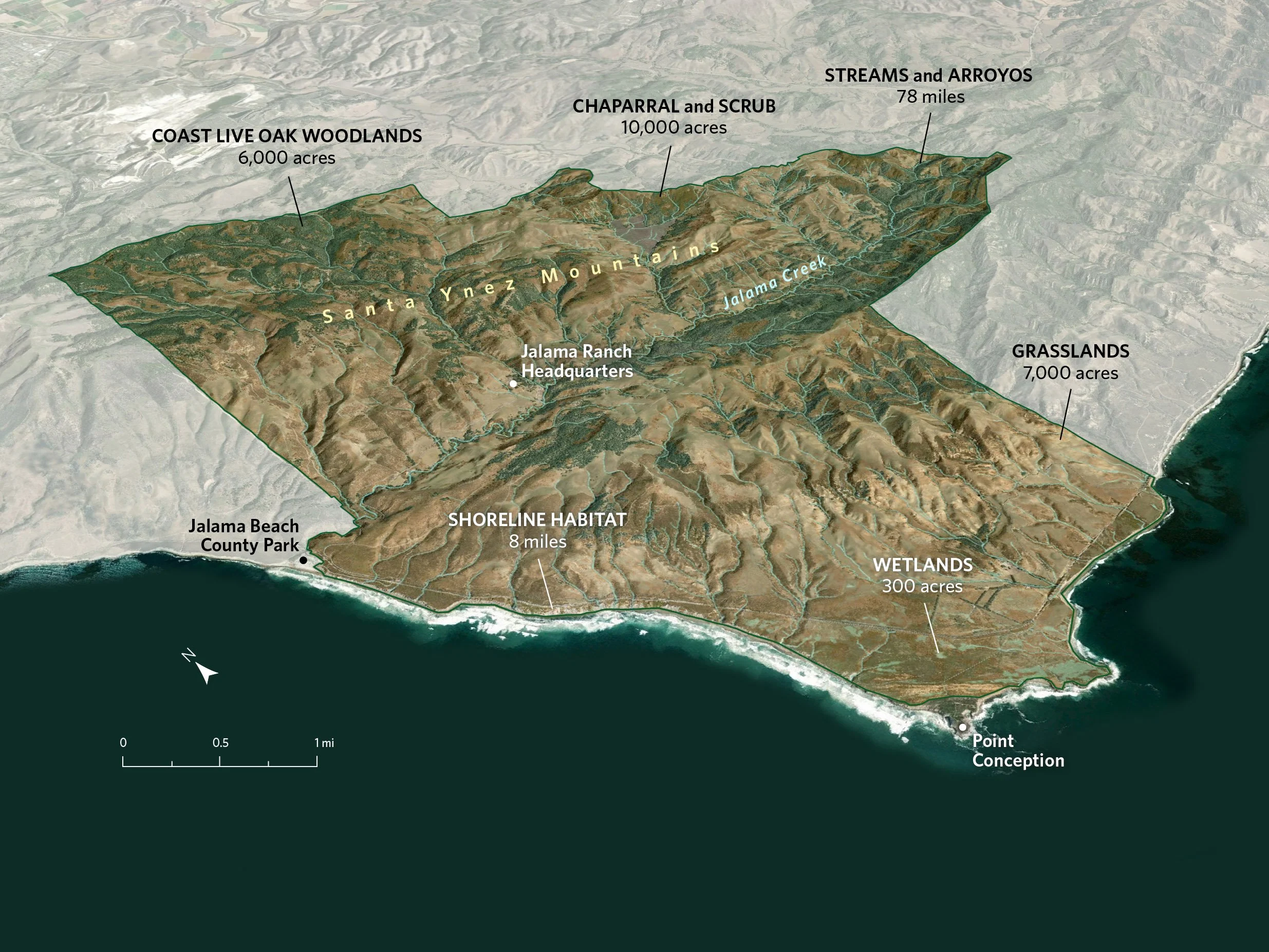
Advancing Conservation Ecohydrology Through High-Resolution Monitoring and Mapping
Research at the Jack and Laura Dangermond Preserve
Our research is based at the Jack and Laura Dangermond Preserve (JLDP), a 24,000-acre protected coastal landscape along the Central Coast. This site offers a unique opportunity to study how Mediterranean-type ecosystems, particularly oak woodlands, respond to changing patterns of water availability and atmospheric demand.
We are building on of the most advanced ecohydrological observatories on the U.S. West Coast, integrating cutting-edge remote sensing, in-situ monitoring equipment, and physiological measurements to understand plant water use and stress at multiple scales. Our goal is to support data-driven conservation and adaptive land management in the face of climate change.
Research goals
-

Quantifying canopy-scale water use and stress
-

Characterizing plant hydraulic trait variation
-

Developing early warning indicators
Study site and observatory design
Our research is based at Army Camp located within the upland oak woodlands of the JLDP. This site spans north- and south-facing slopes, offering strong natural gradients in water availability, energy input, and vegetation structure.
We have established and an instrumented ecohydrological transect at Army Camp to monitor how vegetation responds to variability in both water supply and atmospheric demand.
Integrating multiple complementary monitoring systems
-
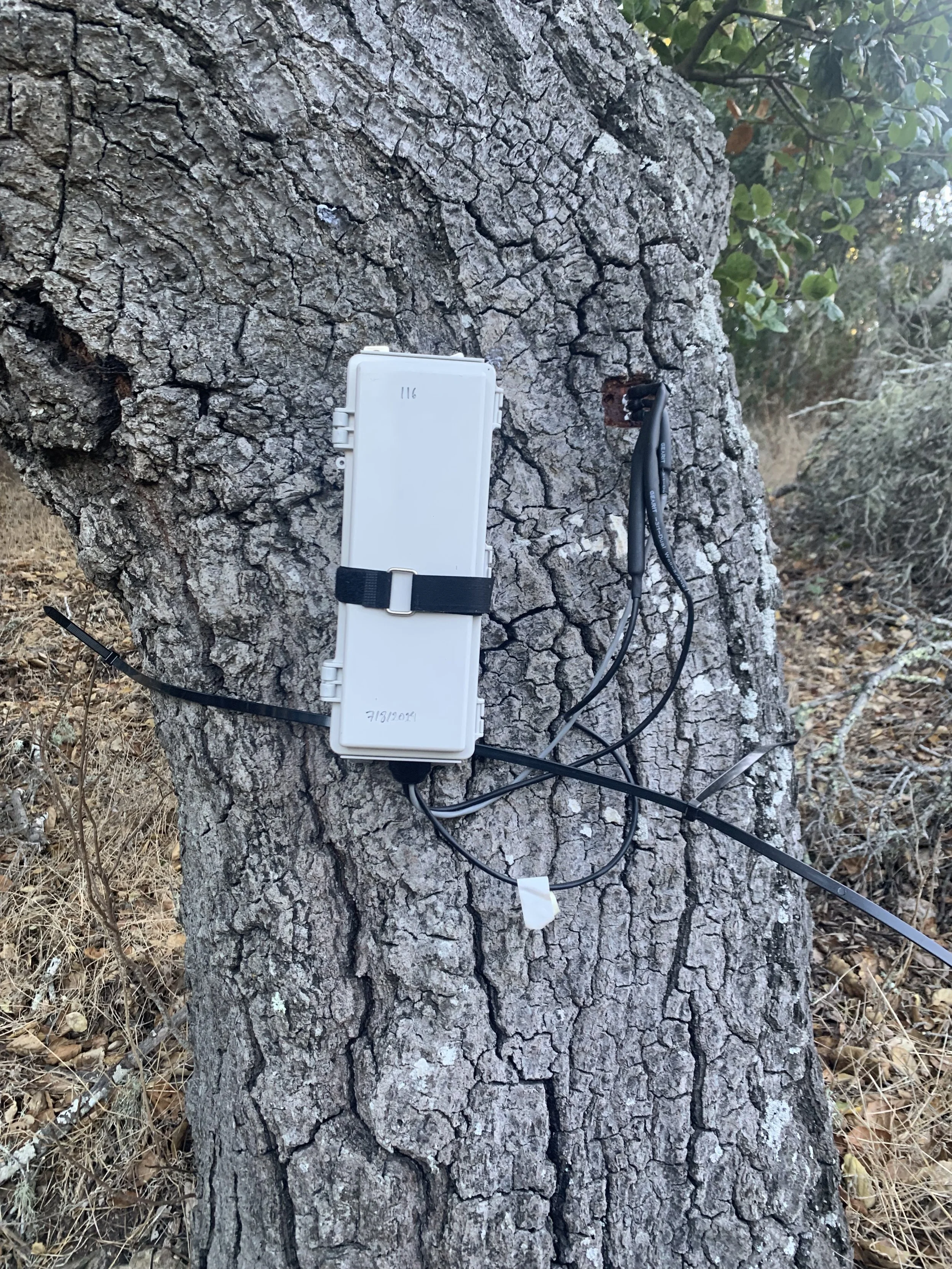
Sap flow sensors
Track real-time water movement through individual trees to quantify transpiration and plant water use.
-
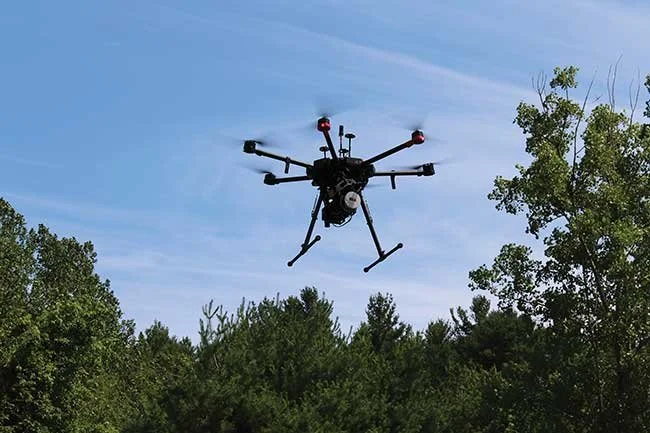
UAV imagery
Capture high-resolution thermal and multispectral data to map canopy temperature, structure, and stress.
-
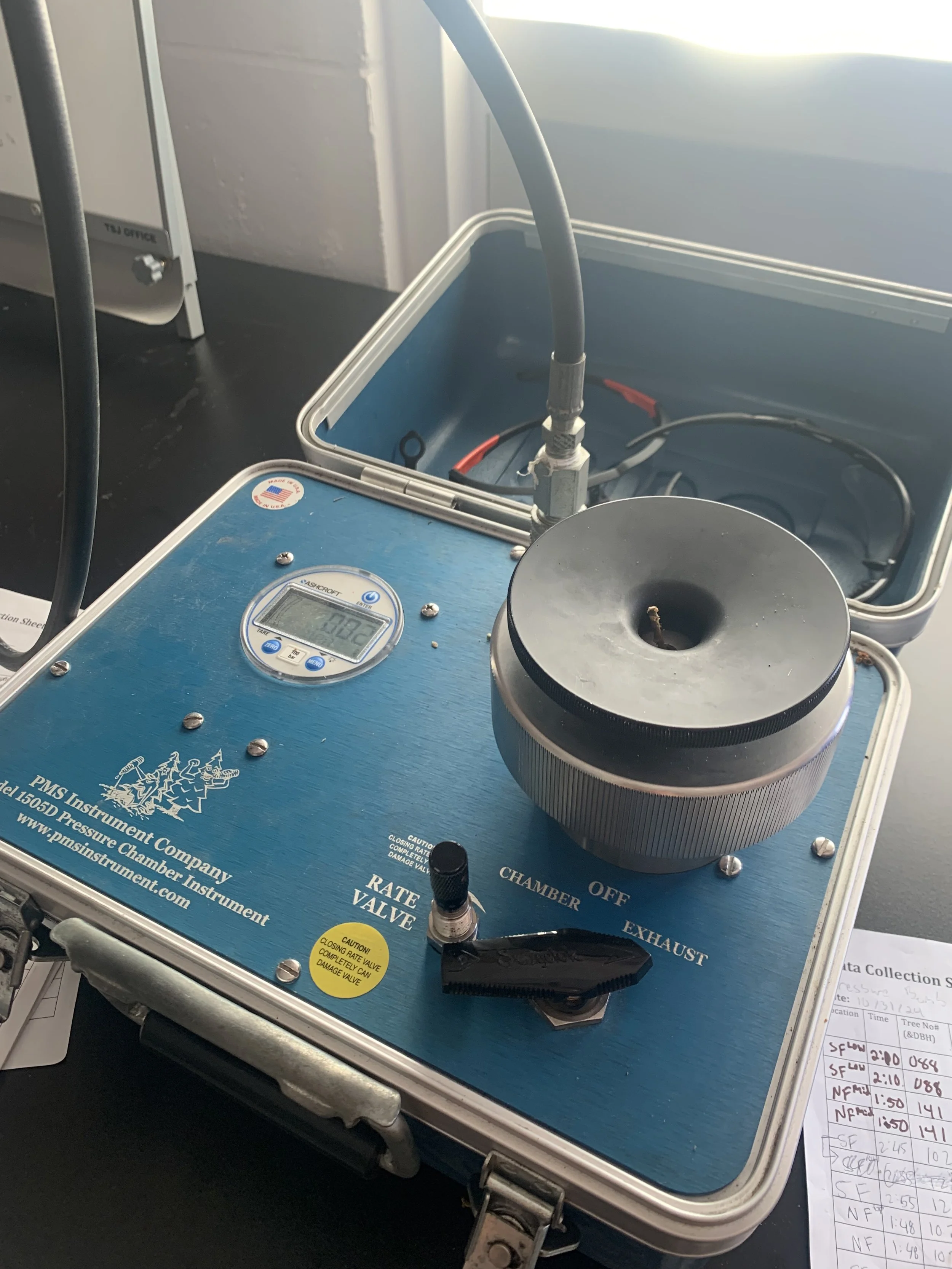
Leaf-level measurement
Measure stomatal conductance, leaf water potential, and net carbon assimilation to assess physiological responses to water availability.
-
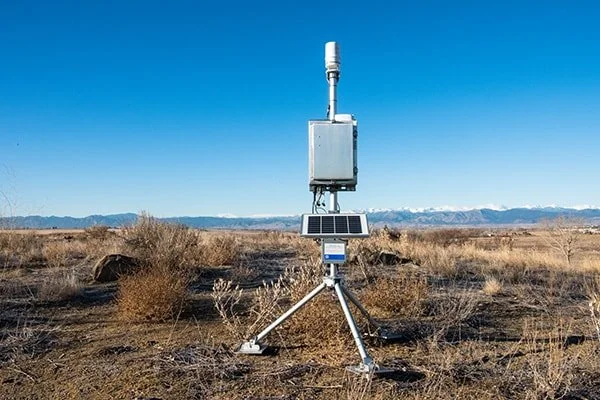
Meterological Data
Record air temperature, humidity, wind, soil moisture profiles, and radiation to model environmental drivers of plant water use.
Publications
-

Estimating fine-scale transpiration from UAV-derived thermal imagery and atmospheric profiles
-

A novel approach for assessing canopy-scale water use: implications for dryland ecosystem resilience
-

Impact of land surface temperature on scaling metrics across ecosystems
-

Global sensitivity of evapotranspiration to available soil moisture
